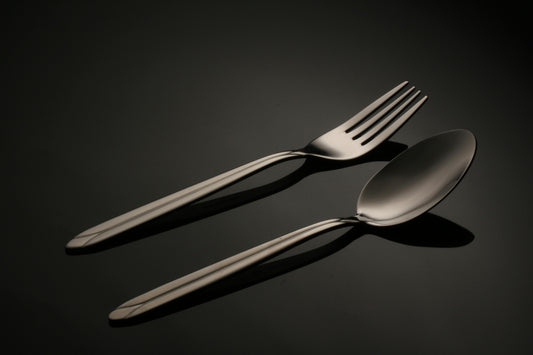Three months can fly by or drag on, but with the right approach, every day can bring you closer to your weight-loss goal.
While the exact amount of weight you can lose in three months varies widely based on individual factors including diet, exercise habits, and metabolism, a safe and sustainable range is typically 12 to 24 pounds, following the recommended guideline of losing 1 to 2 pounds per week, as set forth by the Centers for Disease Control and Prevention (CDC).
Imagine stepping into a healthier, slimmer version of yourself just three months from now—here’s what it takes to turn that vision into reality.
Caution: Before embarking on a weight-loss journey, consider your medical history and consult with your healthcare provider. This ensures that any diet or exercise plan you follow is safe and appropriately tailored to your specific health needs.
How Weight Loss Works
Weight loss boils down to this: burning more calories than you consume. This is called a calorie deficit, and it forces the body to use stored fat for energy, according to the Mayo Clinic. You can do this with a combination of dietary changes and increased physical activity.
Creating a Calorie Deficit
The key to healthy weight loss is maintaining a sustainable calorie deficit while ensuring you meet nutritional needs to support overall health and energy levels.
To calculate a calorie deficit, first determine your daily caloric needs, which is the amount of calories your body requires to maintain your current weight. This can be estimated using a basal metabolic rate (BMR) calculator, which takes into account your age, gender, weight, and activity level.
Once you know your maintenance calories, create a deficit by consuming 500 to 1,000 fewer calories per day than this number, which will set you on track to lose about 1 to 2 pounds per week. Here are a few ways to achieve this:
- Swap soda for water or herbal teas.
- Instead of store-bought bread, make this delicious alkaline bread.
- Snack on fruits and nuts instead of chips or candy.
- Cut back on condiments and dressings.
- Opt for alcohol alternatives over wine, beer, and sugar-laden cocktails.
- Use smaller plates to control portion sizes and reduce the amount of food you consume.
- Incorporate more vegetables. They’re low in calories but high in fiber, which helps you feel full longer.
- Park further away from the entrance to increase your daily steps and calorie burn.
- Take the stairs instead of the elevator.
- Cook at home more often.
- Slow down and focus on your food while eating to increase satiety and reduce the likelihood of overeating.
What and How to Eat to Lose Weight
In order to lose weight effectively, focus on consuming whole, plant-based foods that are alkaline and designed to minimize acidity in the body. This includes a diet rich in fruits, vegetables, alkaline grains, which are less inflammatory than more common grains like wheat, and nuts and seeds, which provide healthy fats and are excellent for snacking or adding to meals.
Here are some of the best foods for weight loss to get you started:
- Apples
- Bananas
- Berries
- Kale
- Cucumbers
- Bell peppers
- Quinoa
- Rye
- Wild rice
- Walnuts
- Sesame seeds
Find a full list of Dr. Sebi-approved foods in our Nutritional Guide.
When preparing meals, aim for simplicity and variety to ensure you meet your nutritional needs without consuming excess calories. Cook with natural herbs and spices instead of salt to enhance flavors without adding sodium.
Dr. Sebi also emphasizes the importance of drinking plenty of spring water (1 gallon a day) and herbal teas to stay hydrated and support metabolic processes.
Foods to Avoid to Lose Weight
Even if you don’t follow an alkaline diet perfectly, there are still foods you’ll absolutely want to avoid in order to lose weight.
- Sugary beverages, such as soda, energy drinks, and fruit juices
- Coffee drinks that include syrups, whipped cream, and other high-calorie additions
- White bread and pastries
- Fried foods like French fries and fried chicken
- Candy
- Fast food
- Alcohol
- Ice cream
- Commercially made pizzas
- Highly processed foods, such as chips, microwave popcorn, and convenience meals
How to Incorporate Exercise for Weight Loss
Aim for a mix of cardiovascular exercises—walking, running, or cycling—which burn calories and improve heart health, and strength training—weightlifting or bodyweight exercises—which build muscle and increase metabolism.
Begin with moderate sessions of 20 to 30 minutes, three to four times a week, and gradually increase the intensity and duration as your fitness improves. Aim to do some form of cardio (like walking) most days of the week and at least 2 days of strength training a week.
Remember, the key to sustained weight loss is consistency, so incorporate a variety of activities that you enjoy, as this will help you stay motivated and consistent.
Other Lifestyle Changes
- Incorporate Dr. Sebi products for weight loss, including our Small Cleansing Package, Alkaline SugarBalance, and Sea Moss Gel.
- Aim for 7 to 9 hours of sleep per night, as poor sleep can affect hormones that regulate appetite and hunger, making you more likely to overeat.
- Reduce stress. High stress levels can trigger emotional eating and increase the body’s production of cortisol, a hormone that can promote weight gain, especially around the midsection (aka stress belly fat).
- Drinking plenty of water throughout the day can help control hunger, boost metabolism, and aid in healthy weight loss.
- Tracking what you eat can increase your awareness of calorie intake and eating habits.
- Establish achievable and measurable goals to keep yourself motivated and on track.
- Join a support group or community to increase your motivation and accountability.
- Limit alcohol consumption: Alcohol is high in calories and can lower inhibitions, leading to poor dietary choices. Cutting back on alcohol can significantly reduce calorie intake.
- Plan meals and snacks in advance to prevent last-minute decisions to eat fast food or order takeout, which are often higher in calories and less nutritious.
- Recognize and celebrate improvements in your fitness and overall health, not just changes on the scale, to maintain motivation and perspective.
What Not to Do
- Skip meals, which can lead to excessive hunger, overeating, or making poor food choices.
- Follow fad diets, which are usually unsustainable and might not provide all the nutrients your body needs.
- Over-restrict calories, which can slow down your metabolism and decrease muscle mass.
- Ignore portion sizes. Even healthy foods can contribute to weight gain if eaten in excessive amounts.
- Neglect strength training. Focusing only on cardio and ignoring strength training can result in a loss of muscle mass, which is crucial for burning calories efficiently.
- Use diet pills or supplements claiming rapid weight loss.
- Drink high-calorie beverages like soda, specialty coffees, and even smoothies.
- Set unrealistic weight-loss goals, which can lead to frustration and may cause you to give up.
Why Rapid Weight Loss Isn’t Safe
Rapid weight loss, often defined as losing more than 2 pounds per week, can lead to numerous health risks and complications. Such quick reductions in weight typically involve losing water weight and muscle mass rather than fat, which can weaken the body and decrease metabolic rate.
This kind of weight loss is often unsustainable, leading to rapid regain of the weight, sometimes even more than was originally lost. Moreover, it can cause nutritional deficiencies and has been linked to serious health conditions, including gallstones, electrolyte imbalances, and heart issues.
Frequently Asked Questions
Can I lose 30 pounds in 3 months?
Yes, it is technically possible to lose 30 pounds in three months, but it requires a significant daily calorie deficit. However, such rapid weight loss is generally not recommended, as it can be hard to sustain and may not be safe for everyone. Consult a healthcare provider before starting.
Does sweating help you lose weight?
Sweating can lead to temporary weight loss due to water loss, not fat loss. However, the weight typically returns as soon as you hydrate, so sweating is not an effective long-term weight-loss strategy.
How much weight loss is noticeable?
Weight loss becomes noticeable typically when you lose about 5 to 10% of your body weight. For someone who starts at 200 pounds, this would mean a loss of 10 to 20 pounds.
Do stretch marks go away when you lose weight?
Stretch marks may become less noticeable when you lose weight, but they do not usually go away completely. The visibility of stretch marks can decrease as the skin tightens, but the marks themselves often remain as permanent changes in the skin's texture.


















































